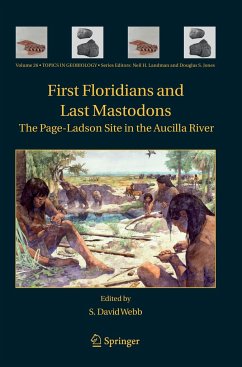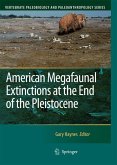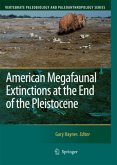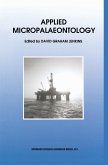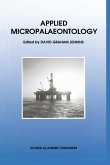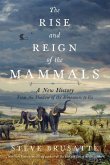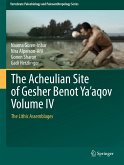Over the last 20 years the Aucilla River Prehistory Project has been one of the most f- cinating stories unfolding in Florida. This project, uncovering the remains of plants and animals from the end of the last Ice Age and the beginning of Florida's human oc- pation, is answering questions important to the entire western hemisphere. Questions such as when did people first arrive in the Americas? Were these newcomer scavengers or skillful hunters? Could they have contributed to the extinction of the great Ice Age beasts - animals such as elephants - that were creatures native to Florida for the pre- ous million or so years? And how did these first Florida people survive 12,000 years ago at a time when sea level was so low that this peninsula was double its present size, sprawling hugely into the warm waters of the Caribbean? Much of Florida at that time was almost desert. Fresh water - for both man and beast - was hard to find. The lower reaches of today's Aucilla River are spellbinding. Under canopies of oak and cypress, the tea-colored water moves slowly toward the Gulf of Mexico, sometimes sinking out of sight into ancient drowned caves and then welling up again a few feet or a few miles downstream. Along the river bottom, the remains of long extinct animals and Florida's earliest people lie entombed in orderly layers of peat, sand, and clay.
From the reviews:
"A monument of interdisciplinary scientific analysis and reporting, and absolutely essential reading for anyone interested in the early human settlement of the Americas." David G. Anderson, Dept. of Anthropology, The University of Tennessee, Knoxville, TN, USA.
"An excellent array of interdisciplinary studies conducted at an important site offering new and exciting clues on the origins of the First Americans" Dr. Stanford, Dept. of Archeology, Smithsonian Institution, Washington, DC, USA
"This impressive volume represents the culmination of over 20 years of underwater archaeological and paleontological research on one of the most significant Paleoindian sites in the southeastern United States. ... The many important contributions in this volume have made tremendous progress toward that goal. ... I highly recommend First Floridians and Last Mastodons to anyone interested in Paleoindian archaeology, late Pleistocene paleontology, or Quaternary paleoecology and climate change. It is certain to become an important reference work in those fields." (Gary S. Morgan, Journal of Mammalian Evolution, Vol. 15, 2008)
"This collective, edited work represents the culmination of 20 years of research, collection, and management of one of the most productive, underwater paleontological sites in the southeastern US ... . The book is a fine addition to the library for those of us concerned with Pleistocene and Holocene aspects of the fossil record. ... Certainly the book will appeal to academics, scientists and researchers in the fields of geology, paleontology, archaeology, biology, and ecology." (D. M. Jarzen, AASP Newsletter, Vol. 41 (3), 2008)
"A monument of interdisciplinary scientific analysis and reporting, and absolutely essential reading for anyone interested in the early human settlement of the Americas." David G. Anderson, Dept. of Anthropology, The University of Tennessee, Knoxville, TN, USA.
"An excellent array of interdisciplinary studies conducted at an important site offering new and exciting clues on the origins of the First Americans" Dr. Stanford, Dept. of Archeology, Smithsonian Institution, Washington, DC, USA
"This impressive volume represents the culmination of over 20 years of underwater archaeological and paleontological research on one of the most significant Paleoindian sites in the southeastern United States. ... The many important contributions in this volume have made tremendous progress toward that goal. ... I highly recommend First Floridians and Last Mastodons to anyone interested in Paleoindian archaeology, late Pleistocene paleontology, or Quaternary paleoecology and climate change. It is certain to become an important reference work in those fields." (Gary S. Morgan, Journal of Mammalian Evolution, Vol. 15, 2008)
"This collective, edited work represents the culmination of 20 years of research, collection, and management of one of the most productive, underwater paleontological sites in the southeastern US ... . The book is a fine addition to the library for those of us concerned with Pleistocene and Holocene aspects of the fossil record. ... Certainly the book will appeal to academics, scientists and researchers in the fields of geology, paleontology, archaeology, biology, and ecology." (D. M. Jarzen, AASP Newsletter, Vol. 41 (3), 2008)

